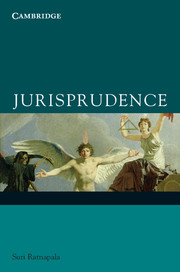Book contents
- Frontmatter
- Contents
- Acknowledgements
- List of Figures
- 1 Introduction
- PART 1 LAW AS IT IS
- 2 British Legal Positivism
- 3 Germanic Legal Positivism: Hans Kelsen's Quest for the Pure Theory of Law
- 4 Realism in Legal Theory
- PART 2 LAW AND MORALITY
- PART 3 SOCIAL DIMENSIONS OF LAW
- PART 4 RIGHTS AND JUSTICE
- References
- Index
4 - Realism in Legal Theory
from PART 1 - LAW AS IT IS
- Frontmatter
- Contents
- Acknowledgements
- List of Figures
- 1 Introduction
- PART 1 LAW AS IT IS
- 2 British Legal Positivism
- 3 Germanic Legal Positivism: Hans Kelsen's Quest for the Pure Theory of Law
- 4 Realism in Legal Theory
- PART 2 LAW AND MORALITY
- PART 3 SOCIAL DIMENSIONS OF LAW
- PART 4 RIGHTS AND JUSTICE
- References
- Index
Summary
In the previous two chapters I discussed the two most influential versions of legal positivism. In this chapter I explain and consider the theories of the jurisprudential school known as the legal realists, who challenge legal positivism in important ways. Realists are also positivists in the sense that they seek to explain the law as it is as opposed to what the law ought to be. Realists agree with the positivists that law's connections with morality are only contingent or coincidental. An immoral rule may still be law. Theirs is a very different complaint: namely, that positivists misrepresent the nature of law by their undue focus on its formal features.
Legal realism refers mainly to two schools of thought. One is known as American realism and the other as Scandinavian realism. Scholars of both traditions reject the more formal descriptions of the law given by legal positivists, but differ in what they see as the chief defects of positivist theory. The American realists claim that the law in real life is very different from the law stated in the law books. The real law, they say, depends on how appellate courts interpret written words and how trial courts determine the facts in particular cases. There is uncertainty at both ends.
Scandinavian realism is a movement that started with Axel Hägerström's attempt to find a scientific theory of law that did not involve metaphysical explanations.
- Type
- Chapter
- Information
- Jurisprudence , pp. 93 - 116Publisher: Cambridge University PressPrint publication year: 2009
- 1
- Cited by



